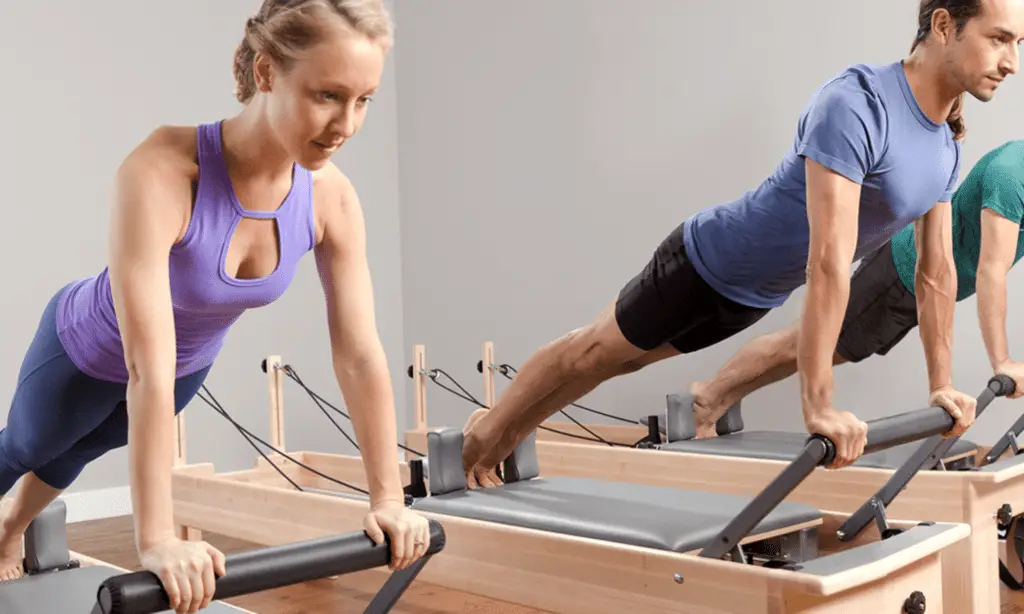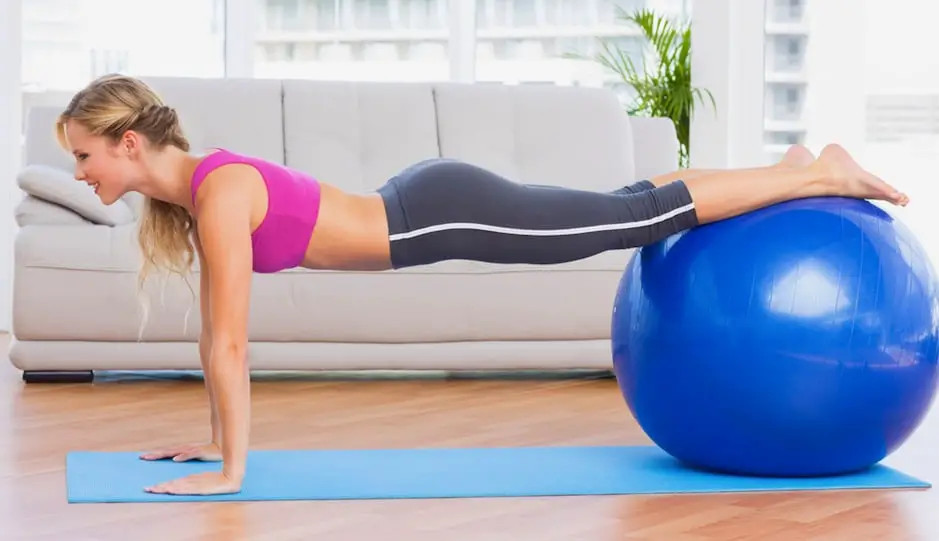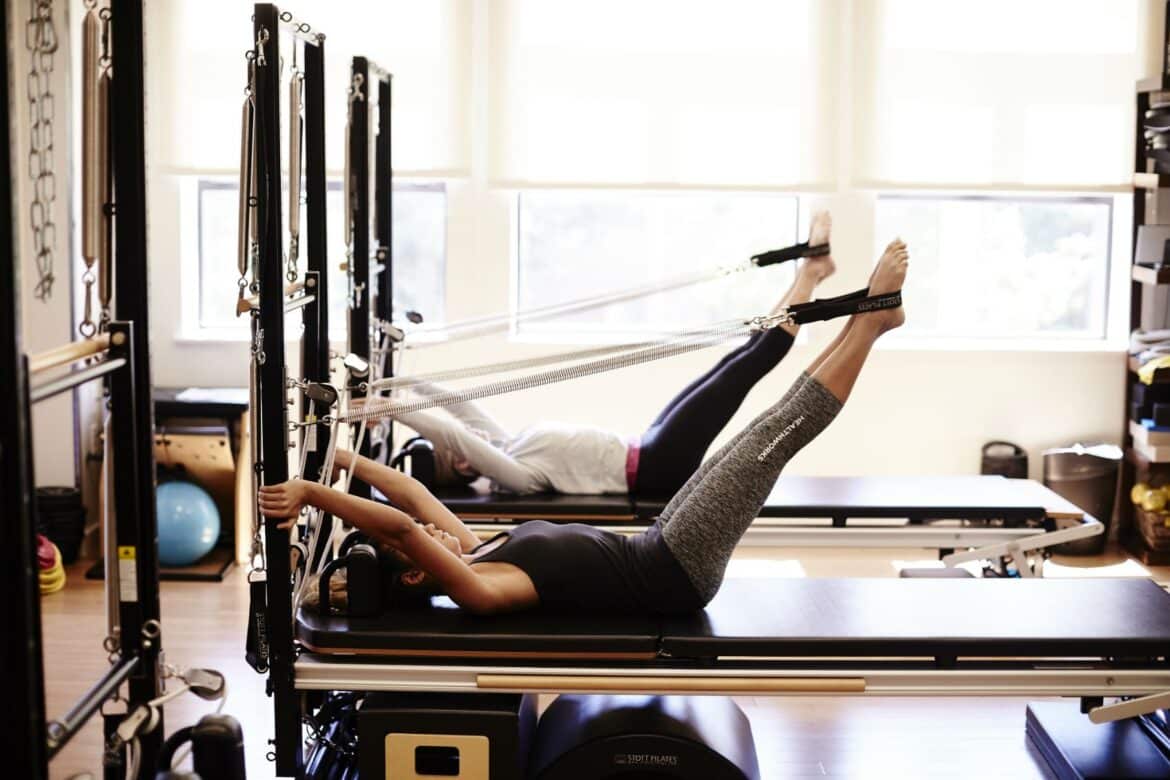Introduction
Is Pilates Weight Bearing: Pilates may not appear to be a conventional weight-bearing exercise like weightlifting or running. Pilates workouts typically involve a series of low-impact movements that emphasize controlled, precise, and fluid motions. These exercises are often performed on specialized equipment such as the reformer or the Cadillac, or simply on a mat. Unlike activities where your body is lifting external weights or experiencing the jarring impact of high-intensity cardio, Pilates seems gentler and less demanding.
The devil is in the details, and this holds true for Pilates as well. The key to understanding Pilates as a weight-bearing exercise lies in comprehending its underlying principles. Central to Pilates is the concept of “core engagement” or the activation of the deep abdominal muscles, which, in turn, supports the spine and pelvis. When properly executed, these movements require the body to resist gravity, effectively making them weight-bearing in nature.
Many Pilates exercises incorporate weight-bearing elements, especially those performed on the reformer or Cadillac. These machines utilize springs and pulleys to provide resistance, forcing the practitioner to work against their own body weight and the tension of the equipment. Thus, Pilates can indeed be a weight-bearing activity, particularly when using these apparatuses. Pilates promotes functional fitness, which enhances your ability to perform everyday activities with ease and grace. This includes activities that demand weight-bearing capacity, like walking, standing, and climbing stairs. By improving posture, balance, and strength, Pilates indirectly contributes to your overall weight-bearing capabilities.

Is Pilates good for weight-bearing exercise?
(2) Pilates builds core strength, balance and coordination, all of which prevent an individual from falling in the first place and thus preventing broken bones. If a fall does occur, the weight bearing element of Pilates reduces the chance of breaking a bone during the accident.
Body Weight Resistance: Many Pilates exercises involve supporting your body weight in various positions, such as planks, push-ups, and leg lifts. These movements require your muscles to work against gravity, contributing to muscle strength and endurance.
Weighted Pilates Equipment: Some Pilates equipment, like the reformer, uses spring resistance, which can be adjusted to provide varying levels of resistance. This added resistance can mimic the effects of weightlifting to some extent.
Core Engagement: Pilates places a strong emphasis on core strength and stability. A strong core is essential for maintaining good posture and overall body control, which indirectly supports weight-bearing activities.
Balance and Coordination: Pilates exercises often incorporate balance and coordination challenges. These elements are essential for maintaining stability and preventing falls, especially as you age.
Does Pilates strengthen bone density?
Done correctly, Pilates exercises can help people with weakened bones by: Increasing bone density when body parts move against the force of gravity. Increasing strength and muscle mass, which in turn help to support the bones. Improving balance, which can help prevent falls that might result in a bone fracture.
Muscle Strengthening: Pilates focuses on building core strength and muscle endurance. When you engage in Pilates exercises, you put stress on the muscles that support your skeleton. Over time, this muscle engagement can indirectly benefit bone density.
Balance and Posture: Pilates places a strong emphasis on balance and good posture. These elements are crucial for maintaining stability and preventing falls, which can be a significant concern for bone health, particularly in older adults.
Full-Body Engagement: While not traditional weight-bearing exercises, many Pilates movements engage multiple muscle groups throughout the body. This full-body approach can contribute to overall physical fitness and indirectly support bone health.
Flexibility: Pilates also promotes flexibility, which can aid in injury prevention. Avoiding injuries is maintaining an active lifestyle, including weight-bearing exercises.
What is a good weight-bearing exercise?
Weight-bearing exercises force your body to work against gravity, which helps to strengthen bones. Examples include walking, climbing stairs, playing tennis, and dancing. Higher-impact activities strengthen bone more than lower-impact exercises, but only do what your fitness level allows.
Walking:Walking is one of the simplest and most accessible weight-bearing exercises. It requires no special equipment and can be done almost anywhere. Regular brisk walking helps strengthen bones, improve cardiovascular health, and support weight management. Aim for at least 150 minutes of moderate-intensity walking per week for significant health benefits.
Running:Running is a higher-impact weight-bearing exercise that offers excellent cardiovascular benefits and can help build strong bones. It’s essential to start gradually, especially if you’re new to running, to prevent injuries. Proper footwear and running technique are also crucial for safety and effectiveness.
Strength Training:Strength training involves lifting weights or using resistance bands to build muscle mass and increase bone density. Exercises like squats, deadlifts, bench presses, and rows are effective at targeting various muscle groups while putting stress on your bones. It’s essential to start with proper form and gradually increase the weight to avoid injuries.
Dancing:Dancing is a fun and engaging way to get your heart rate up and strengthen your bones and muscles. Styles like ballet, hip-hop, and Zumba can be excellent options for weight-bearing exercise. Dancing also improves balance and coordination, which are essential for overall fitness.
What exercise is not weight-bearing?
Non weight bearing exercises are activities you can do without having to support your own body weight, such as swimming or riding a bicycle. Exercises for osteoporosis prevention include both these activities.
Swimming: Swimming is a classic non-weight-bearing exercise that offers a full-body workout without putting stress on the joints. The buoyancy of water supports your body, making it an excellent choice for people with joint pain or arthritis.
Cycling: Whether on a stationary bike or riding outdoors, cycling is a low-impact exercise that provides an efficient cardiovascular workout while reducing the risk of joint injuries.
Rowing: Rowing machines provide a low-impact total-body workout. This exercise is gentle on the joints and can help improve cardiovascular fitness and strengthen muscles.
Elliptical Trainer: Using an elliptical trainer mimics the motion of walking or running without the impact on your joints. It engages both the upper and lower body for a well-rounded workout.
Yoga: Yoga is a non-weight-bearing exercise that focuses on flexibility, balance, and mindfulness. It can be adapted to various fitness levels and is known for its stress-reducing benefits.
Can yoga be weight-bearing?
Weight bearing exercises, including yoga, help tremendously in the remodeling process of our bones. They encourage more bone growth increasing the rate of HEALTHY bone turnover and so are vitally important to practice especially when we are younger.
Poses That Bear Weight: Numerous yoga poses, such as planks, downward-facing dog, and warrior poses, require you to support your body weight using various muscle groups. Holding these poses challenges your muscles and bones, contributing to increased strength and endurance.
Balancing Asanas: Yoga includes a wide range of balance poses that require you to distribute your weight evenly and engage your muscles to stay stable. Poses like tree pose and half-moon pose build strength in the legs and core.
Isometric Contractions: Many yoga poses involve isometric contractions, where you contract your muscles without changing their length. These contractions can lead to muscle hypertrophy (growth) and increased bone density over time.
Is walking full weight-bearing?
It turns out that walking’s technically weight bearing — you are bearing your own weight, after all — but while it’s good for your muscles, heart, lungs and mental health, it’s probably not stressing your bones enough to count. Consider this: walking is good for your joints because it’s low impact.
Supporting Body Weight: When you walk, your body weight is transferred through your legs and feet, making contact with the ground. This contact creates the resistance needed for weight-bearing exercise, stimulating bone health and muscle engagement.
Bone Density Benefits: Weight-bearing exercises are essential for maintaining and increasing bone density. Walking helps distribute mechanical forces to your bones, promoting bone growth and reducing the risk of osteoporosis.
Muscle Engagement: Walking engages various muscle groups, including the quadriceps, hamstrings, calves, and glutes. These muscles work to support and propel your body weight with each step.
Cardiovascular Benefits: In its weight-bearing properties, walking provides excellent cardiovascular benefits. It can improve heart health, increase lung capacity, and contribute to overall fitness.
How to survive 6 weeks non-weight-bearing?
Rely On Others – Lean on others for support and help while you’re non-weight bearing. Again, it’s helpful to give others a heads up well in advance, but see if a friend can bring your homework to your house after school, or have someone else bring you groceries or come take the trash out.
Weight-bearing exercises, also known as weight-loading exercises, are activities in which you support your own body weight against gravity. These exercises stimulate your bones and muscles, contributing to improved bone density, muscle strength, and overall physical fitness. Traditional weight-bearing exercises include activities like running, jogging, weightlifting, and dancing.
Stay Busy
Keep your mind occupied with books, movies, puzzles, or hobbies.
Set goals and create a daily routine to maintain a sense of purpose.
Learn New Skills
Consider using this time to acquire new skills or knowledge.
Online courses or learning platforms can provide opportunities for personal growth.
Stay Safe
Be cautious when moving around, especially on slippery surfaces.
Avoid activities that could put you at risk of falling or injuring your non-weight-bearing limb.
Lean on Your Support System
Don’t hesitate to ask for help when needed.
Friends and family can assist with tasks like grocery shopping or transportation.
Maintain Good Hygiene
Bathing and grooming may require adaptations, such as using a shower chair or sponge bath.
Pay extra attention to skin care to prevent pressure sores.
Is sitting down non-weight-bearing?
This means that you are restricted from placing any weight on your foot whether you are standing or sitting down. Weight should not be placed on the foot for any period of time, not even for a minute.
Muscle Atrophy: When you sit for extended periods, the muscles that support your spine and posture can weaken and atrophy. This can lead to postural issues and discomfort.
Reduced Bone Density: While sitting is not as detrimental to bone health as prolonged bed rest, it does not provide the weight-bearing stimulus that more active forms of exercise do. Over time, this can contribute to a decrease in bone density, particularly in the spine and hip areas.
Cardiovascular Risks: Extended sitting can increase the risk of cardiovascular problems, including heart disease and deep vein thrombosis (DVT). It can also lead to weight gain and metabolic issues.
Postural Problems: Prolonged sitting can lead to poor posture, back pain, and increased pressure on the intervertebral discs, potentially causing spinal problems.
Frequent Breaks: Take regular breaks to stand up, stretch, and walk around. Even short breaks can help reduce the negative impact of sitting.
Ergonomic Workspace: Ensure your workspace is ergonomically designed to support good posture and reduce strain.
Regular Exercise: Incorporate weight-bearing exercises and physical activity into your daily routine to counteract the effects of prolonged sitting.
Proper Seating: Choose chairs that provide adequate lumbar support and encourage good posture.
Stretching: Perform regular stretching exercises to counteract muscle tightness and maintain flexibility.

Conclusion
Pilates’s emphasis on core engagement and its unique approach to resistance training provide ample opportunities for individuals to work against their own body weight. When executed with precision and control, Pilates movements require muscles to resist gravity, thus promoting strength and stability.
The inclusion of specialized equipment like the reformer and Cadillac in Pilates workouts adds another layer of weight-bearing potential. These apparatuses utilize springs and pulleys to create resistance, effectively challenging practitioners to work against their own body weight and the equipment itself. This dynamic resistance further reinforces the weight-bearing aspect of Pilates.
Pilates isn’t just about building muscles; it’s about fostering functional fitness. The improved posture, balance, and overall strength gained through Pilates translate into better weight-bearing capabilities in everyday life. Whether it’s standing, walking, or engaging in daily activities, the benefits of Pilates become evident as individuals move with greater ease and confidence. It’s worth noting that Pilates is accessible to a wide range of individuals, including those who may find high-impact weight-bearing exercises too strenuous or those who are recovering from injuries. This inclusivity makes Pilates an excellent choice for people looking to improve their overall health and well-being while gradually increasing their weight-bearing capacity.

